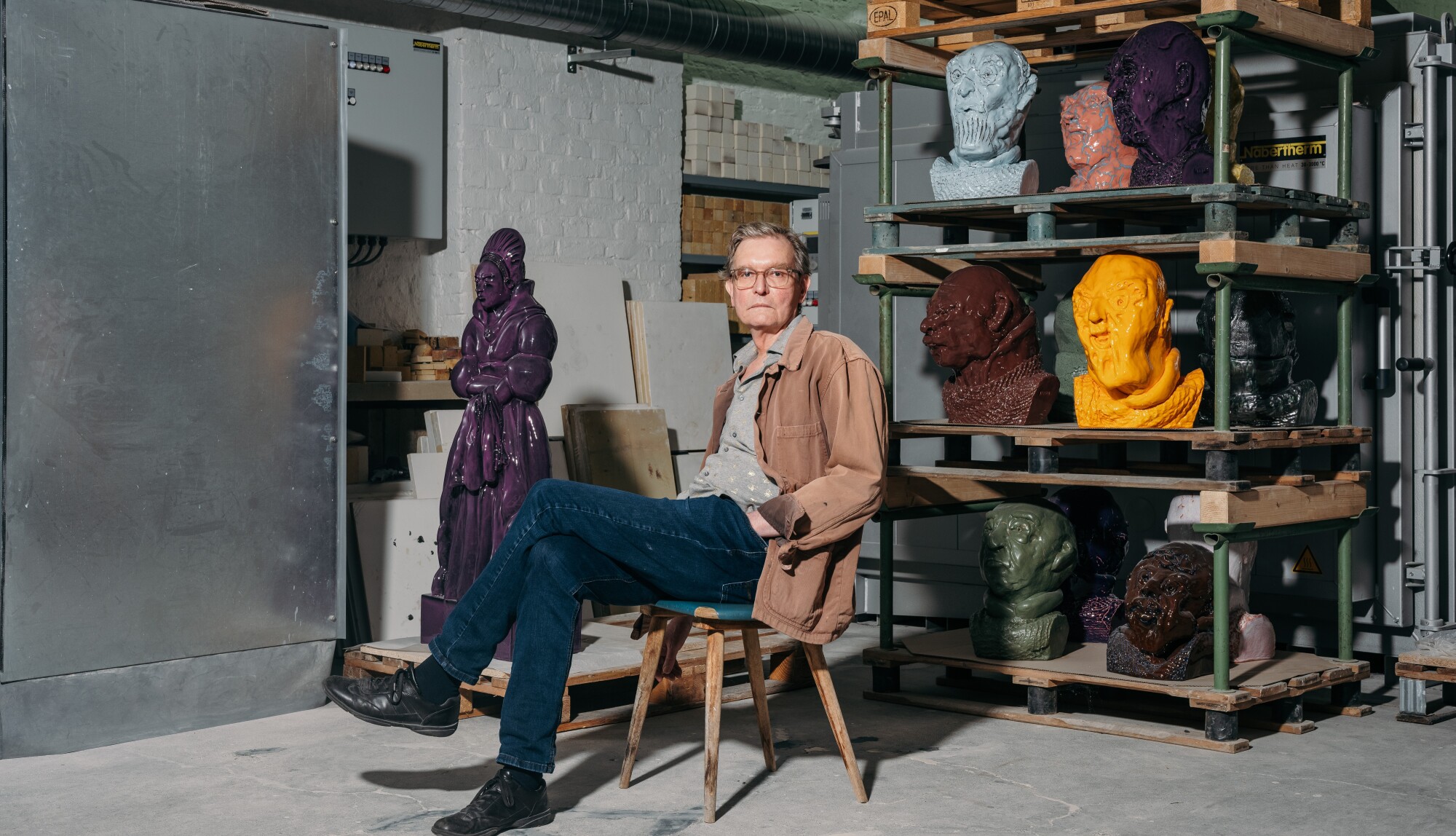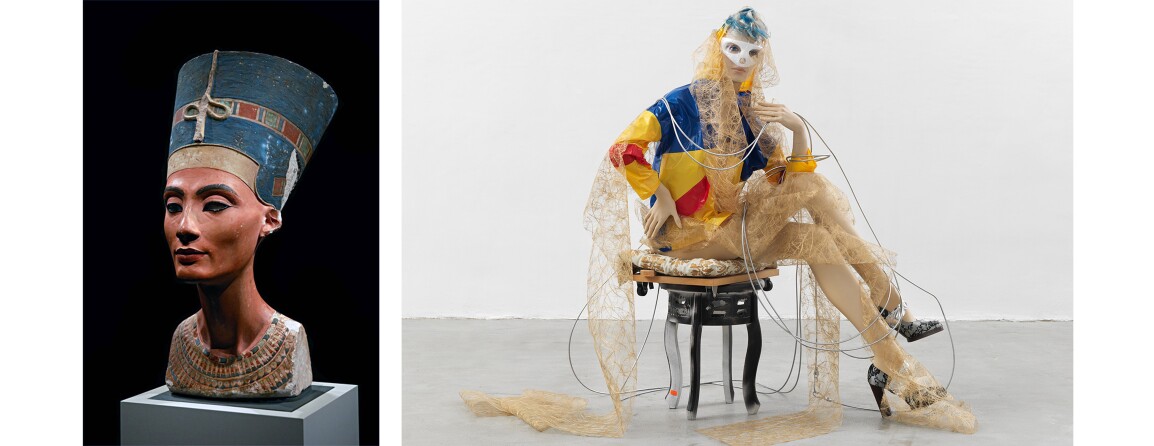
“I never propose a reading… The more readings a piece has after 500 years—and we only live 50 years—the better is its chance of surviving. The one-liner never survives.”
Representational yet uncanny, beautiful yet tragic, Thomas Schütte’s Roter Frauenkopf epitomizes the very contradictions that characterize and complicate the central concern of his practice: the human condition. Perhaps nowhere is his career-wide engagement with the history, past and present, of human existence and accomplishment so powerfully yet succinctly meditated on than in the severed heads of his Frauerkopfen. Whether in wax or bronze, ceramic or clay, steel or glass, the diversity of Schütte’s sculptural output parallels his stance on humanity: it is mutant and mercurial, shape shifting and precarious. Executed in 2007, the present work was created two years after Schütte was awarded the Golden Lion for Best Artist at the 51st Venice Biennale and has resided in the collection of Barbara Gladstone for nearly two decades, where it held pride of place in her New York residence. Schütte is currently the subject of extraordinary critical and commercial interest, recently honored with his sweeping eponymous mid-career retrospective at The Museum of Modern Art, New York from 2024-25.

Here, a uniform scarlet glaze bathes the face, neck, and hair of Schütte’s Roter Frauenkopf, who lays in repose, eyes and lips at rest. Invoking the dormant peace of Constantin Brancusi’s Sleeping Muse, Aristedes Maillol’s recumbent nudes, or even beheaded antiquities, Roter Frauenkopf testifies to Schütte’s far-reaching reappraisals of artistic invention. Trained under Gerhard Richter and having studied classical sculpture in Rome, Schütte exercises in the present work his fascination with the human condition and how it has been catalogued in the annals of history, whether artistic, cultural, or sociological. His odyssey into the limits of figuration probes this legacy, but his Frauenkopf see the head not as a singular site for veneration or formal reimagination but a vessel for synthesizing consciousness, memory, and mortality. Unconscious, asleep, maybe even dead, Roter Frauenkopf sees the self and history viewed literally and conceptually from a distance.


Schütte’s work, which is conceptual, critical, intellectual and evasive, refuses categorization, and the artist himself refuses to feed us his interpretations—admitting in the process of creation that even he knows not what they are “about.” “I never propose a reading,” Schütte has shared. “The more readings a piece has after 500 years — and we only live 50 years — the better is its chance of surviving. The one-liner never survives.” (the artist quoted in: Blake Gopnik, “A Slippery Devil Finally Gets His Moment at MoMA,” The New York Times, 28 September 2024 (online)) Recognizable yet illegible, they are at once in and out of reach. Schütte’s work is a gift and a challenge, a miraculous and welcome answer to the qualms of contemporary portraiture as identified by John Berger: “It seems that the demands of a modern vision are incompatible with the singularity of viewpoint which is the prerequisite for a static-painted ‘likeness’. The incompatibility is connected with a more general crisis concerning the meaning of individuality. Individuality can no longer be contained within the terms of manifest personality traits. In a world of transition and revolution individuality has become a problem of historical and social relations, such as cannot be revealed by the mere characterizations of an already established social stereotype. Every mode of individuality now relates to the whole world.” (John Berger quoted in: Exh. Cat., London, Serpentine Gallery, Thomas Schütte: Faces & Figures, 2012, n.p.)

Roter Frauenkopf and the whole of Schütte’s sculptural output reads as an answer to these limitations: his work separates itself from the inclinations toward individuality or personality in terms of Renaissance humanism in order to plumb the truth of the human condition—in all of its splintered, warped, and varied forms. Interrogating and substantiating the philosophical questions at the heart of our existence, Roter Frauenkopf is a paragon of Schütte’s mythic and epoch-defining oeuvre.






